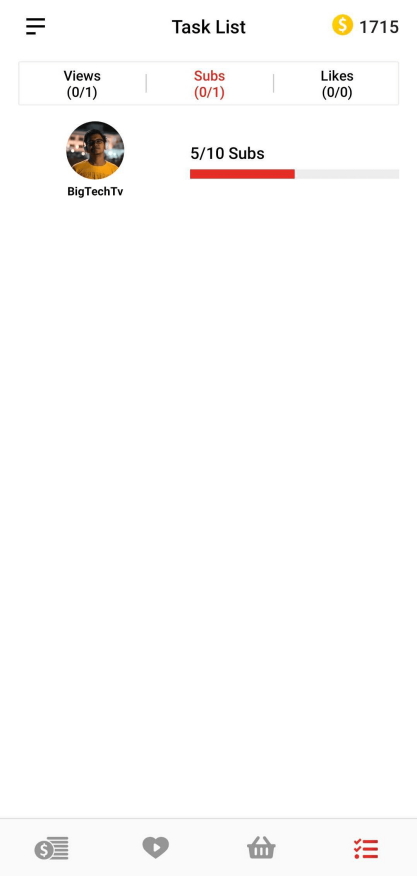Exploring Revenue Generation on YouTube: An In-Depth Study
 Overview
Overview
 YouTube, as the world’s most popular video-sharing platform, has developed significantly since its launch in 2005. This research aims to examine the different monetization strategies employed by content creators on YouTube and their effectiveness. By examining data from multiple sources, including discussions with top content creators, platform-specific statistics, and market analyses, this study provides a thorough overview of how creators earn money. The study concludes with a examination on the prospective changes in YouTube monetization.
YouTube, as the world’s most popular video-sharing platform, has developed significantly since its launch in 2005. This research aims to examine the different monetization strategies employed by content creators on YouTube and their effectiveness. By examining data from multiple sources, including discussions with top content creators, platform-specific statistics, and market analyses, this study provides a thorough overview of how creators earn money. The study concludes with a examination on the prospective changes in YouTube monetization.
Background
YouTube’s business model has changed dramatically over the years, changing from a platform primarily for user-generated content into a lucrative avenue for content creators. With over 2 billion logged-in monthly users and more than 500 hours of content uploaded every minute, YouTube offers vast opportunities for monetization. This study aims to dissect the multiple strategies utilized by YouTubers to generate revenue and evaluate their effectiveness.
Research Approach
This analytical study employs a mixed-method approach. Primary data was obtained through in-depth discussions with ten successful YouTubers across different genres, including gaming, beauty, education, and vlogging. Secondary data was obtained from buy youtube subscribers [webeys.com] analytics, industry reports, and scholarly articles. This mix of qualitative and quantitative data provides a solid foundation for understanding YouTube monetization strategies.
Revenue Generation Methods
Advertising Income
Ad revenue is one of the most widespread monetization methods on YouTube. Content creators can make revenue through YouTube’s Partner Program by displaying ads on their videos. These ads can take various forms, including pre-roll ads, mid-roll ads, display ads, and overlay ads. The revenue from ads are influenced by factors such as the viewership, audience demographics, and engagement rates.
Impact: Ad revenue can be a stable source of income for creators with a significant viewership. However, it is affected by fluctuations based on changes in YouTube’s algorithm and ad policies. Creators also face the problem of “adpocalypse,” where content viewed as problematic by advertisers causes demonetization.
Subscriber Perks and Live Engagement Features
Channel memberships allow viewers to subscribe to a channel for a monthly fee, providing creators a steady income stream. In return, members receive advantages such as exclusive content, badges, and emojis. Super Chat is another feature where viewers can pay to have their messages featured during live streams.
Effectiveness: These features are particularly effective for creators with a dedicated fanbase. They encourage a sense of community and provide creators with a more consistent revenue stream compared to ad revenue.
3. Merchandising
Many YouTubers use their brand to sell merchandise, including clothing, accessories, and digital products. Platforms like Teespring and Merchbar connect to YouTube, making it simpler for creators to display and sell their products directly through their channels.
Effectiveness: Merchandising can be extremely rewarding, especially for creators with powerful brand recognition and loyal followers. It also allows creators to diversify their income sources and reduce dependence on YouTube’s ad revenue.
4. Sponsored Content and Brand Deals
Sponsored content involves partnerships with brands where creators promote products or services in their videos. These deals can be extremely rewarding but require creators to maintain authenticity to avoid distancing their audience.
Performance: Sponsored content and brand deals can generate significant income, especially for creators with a sizable and engaged following. However, creators must strike a balance between sponsored content and organic content to maintain viewer trust.
Commission-Based Promotions
 Affiliate marketing involves creators promoting products or services and earning a commission for every sale made through their referral links. This strategy is commonly used in niches like tech, beauty, and lifestyle.
Affiliate marketing involves creators promoting products or services and earning a commission for every sale made through their referral links. This strategy is commonly used in niches like tech, beauty, and lifestyle.
Effectiveness: Affiliate marketing can be a reliable income source, especially for creators who create review and tutorial content. The effectiveness is primarily influenced by the trust and influence the creator has over their audience.
6. Crowdfunding
Platforms like Patreon allow creators to get financial support from their fans in exchange for exclusive content and perks. This model is especially common among creators who produce niche content with a smaller but highly dedicated audience.
Impact: Crowdfunding provides creators a reliable income stream and promotes a closer connection with their audience. It is particularly advantageous for creators whose content may not be appropriate for ad revenue.
Discussion
The effectiveness of YouTube monetization strategies differs considerably based on several factors, including the creator’s niche, audience demographics

